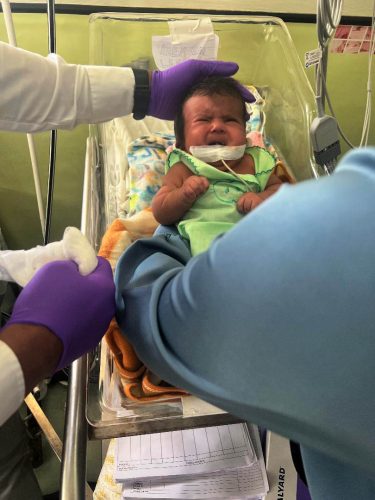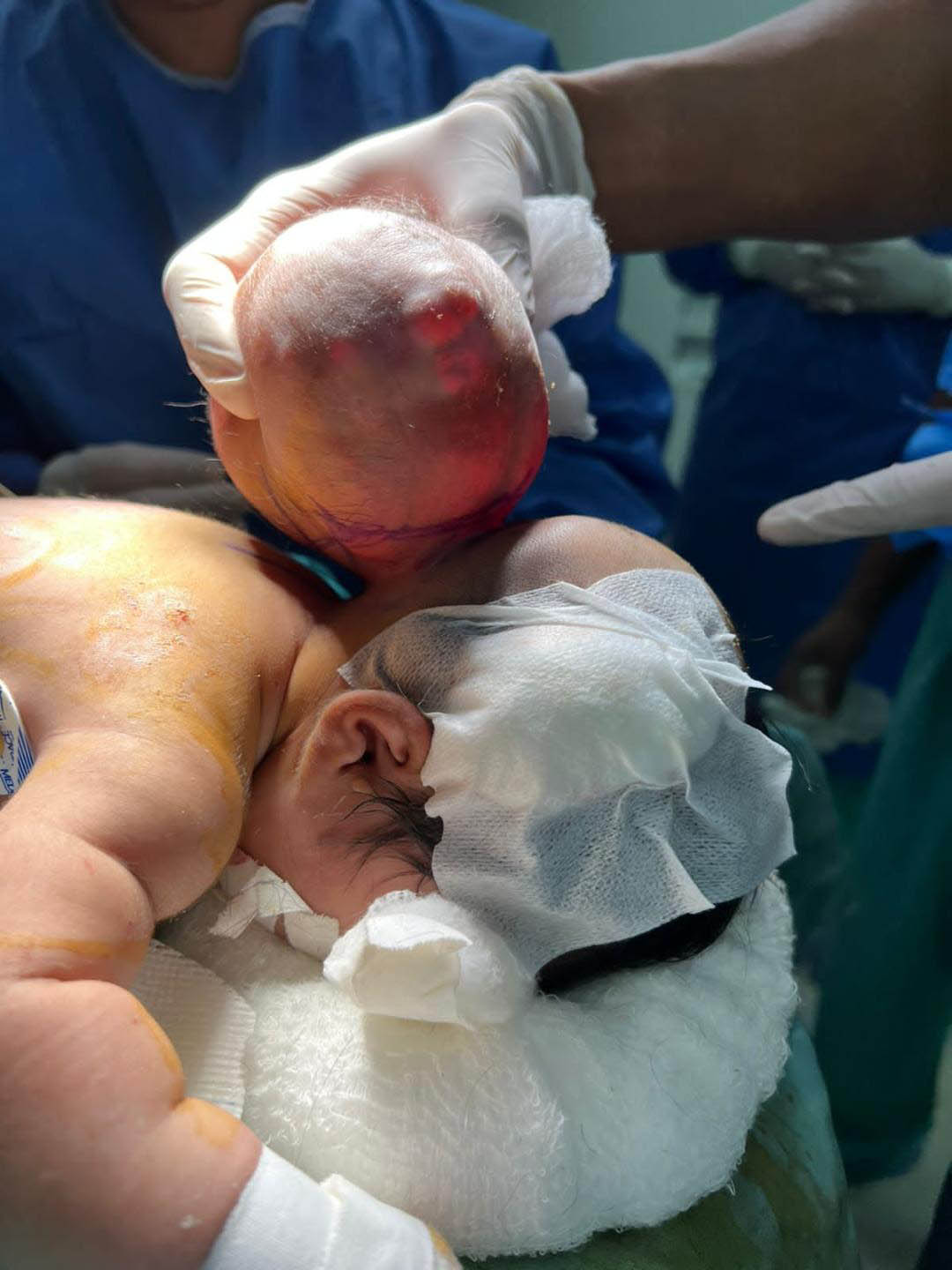Local doctors recently performed a successful surgery to remove a mass which presented itself as a “second head” from a newborn baby.
The Georgetown Public Hospital (GPH) announced on Saturday that the successful six-hour procedure was performed on Shailah Ariya Persaud, who was diagnosed with a rare Neural tube defect days after she was born.

The surgery was done by a multi-disciplinary team led by Chief Neuro-surgeon Dr Amarnauth Dukhi on Friday, September 30, just 11 days after Persaud was born via C-section to Satesh Persaud and Altia Atkinson, of Reliance, Essequibo. She is sixth child to her parents.
According to the Cleve-land Clinic website, Neural tube defects (NTDs) are birth defects of the brain, spine or spinal cord that happen in fetuses within the first month of pregnancy.
“This… complicated medical intervention for Shailah commenced firstly with the placement of VP shunt for the developing Hydrocephalus that was also diagnosed. The large malformation/mass, the size of the normal head was then carefully separated from the head and upper cervical spine. This was followed by the reconstruction of the cranio-spinal junction’s defect to prevent the leakage of cerebrospinal fluid and allow for normal development of brain and spinal structures,” the GPH explained in a statement.
Persaud has since been discharged without any neurological deficits following seven days of neo-natal post-operative care. She is expected to lead a normal childhood and will be monitored to detect any difficulty in her developmental curve.
The GPH said Altia sought prenatal care her community health centre and while her ultrasounds appeared normal, it wasn’t until she was admitted for delivery that “some irregularity” was detected.
“…[H]owever, physicians at the Suddie Hospital were unable to determine if the mass/growth they were detecting was growing on Alita or her unborn child,” the statement said.
Immediately after her delivery, Persaud was referred to the GPH, where she was reviewed and diagnosed by Dr Dukhi with a neural tube defects.
“After MRI scans of the brain and cervical spine was done, Dr. Dukhi confirmed a rare Cranio-Cervical Junction malformation, a combination of the neural tube defects of the brain and spine as one, a Myelomeningocele-encephalocele occurring at the back of the head where the brain joins the spinal cord,” the release explained.
While neural tube defects are quite a common birth defect, the statement said they usually occur on the head or the spine separately. “In fact, the occurrence of encephalocele and myelomeningocele together as one defect in the same patient is rarely described in medical literature,” the GPH said.
“In these uncommon cases the neural tube defect presents as sac-like protrusions on the brain and spine and are caused by the failure of the neural tube to close completely during foetal development, which may be attributed to several internal and external factors, mainly lacking the use of Folic Acid during pregnancy,” the statement added.
The management of encephalocele and myelo-meningocele is often associated with numerous challenges, including blood loss, cardio-respiratory disturbances and hypothermia, the GPH added. “Surgical intervention is critical for prevent hemodynamic fluctuations and excessive pressure on the sac which may result in premature rupture and eventual death,” it noted.
The team that performed the successful surgery. (GPH photo)






